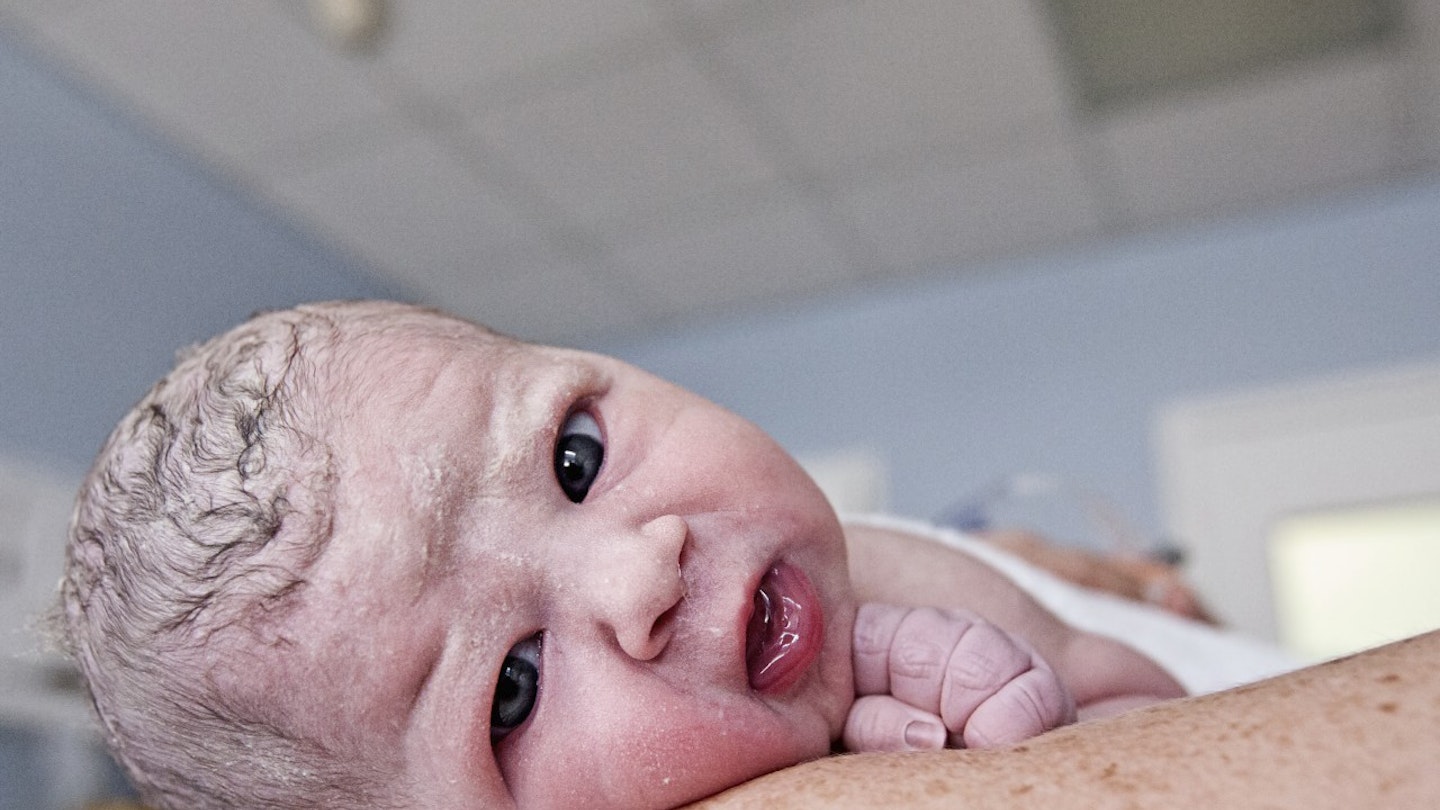While all parents think theirs is the most beautiful baby in the world, few come out rosy-cheeked and gurgling with delight. In fact, they’re more likely to appear squashed, wrinkled and covered in the posh goose fat you use for your Sunday roast. Get ready for her grand entrance with the real facts
Her head may be squashed
Your baby’s skull has to be soft in order to squeeze through the birth canal, so it can come out looking misshapen. ‘This is called moulding and can result in a cone shape,’ says paediatrician Dr Martin Ward Platt. ‘This usually goes back to normal within a week or two.’ An assisted delivery can affect her looks, too, with ventouse suction creating a pointy head, and a forceps birth leaving your baby with temporary dents and red marks on her temples. C-section babies, on the other hand, tend to keep their natural, rounder head shape, as they’re lifted straight out of the womb.
A shock of hair
You might do a double take if your baby is born with a shock of black hair (especially if you’re a redhead) but your newborn’s hair doesn’t have much bearing on what it will eventually be like.
Talking of hair, she might be a bit furry, too, particularly if she’s premature.
Hair can fall out altogether in the first few weeks, then take up to a year to grow back or go from straight to curly in months. Talking of hair, she might be a bit furry, too, particularly if she’s premature. ‘This is lanugo – a downy hair that protects the skin on her shoulders, back and ears when she’s in the womb,’ says Sue MacDonald, from the Royal College of Midwives. It usually sheds when you’re around 33 to 36 weeks pregnant, but can last a bit longer or be more obvious if she’s premature.
Not-so-baby-soft skin
If you’re imagining your baby will be born with a peaches-and-cream complexion, think again. After nine months soaking in amniotic fluid, she’s more likely to come out looking grey or purple, with mottled skin. You’ll also see vernix – a waxy white substance that coats her body in the uterus. ‘This protects her from the amniotic fluid, makes her slippery for delivery and also has antibacterial properties,’ says Martin. Your baby will be dried and wrapped in a towel after being born, so how her skin looks depends on how much she’s been cleaned.
Spots and birthmarks
Around 30-40% of new babies are born with milia, which are small white or yellow spots that look like tiny pimples around the nose, cheeks, chin and mouth. Tempting as it may be, don’t squeeze them – they’ll disappear on their own by around six weeks. Birthmarks are also common. ‘These occur when the tiny blood vessels under the skin are dilated during labour,’ says Martin. ‘They come in a wide range of shapes, sizes and colours, and can show up anywhere on a baby’s body. Certain types may not appear for several days or weeks after birth, but most go away in the first few years of life.’
